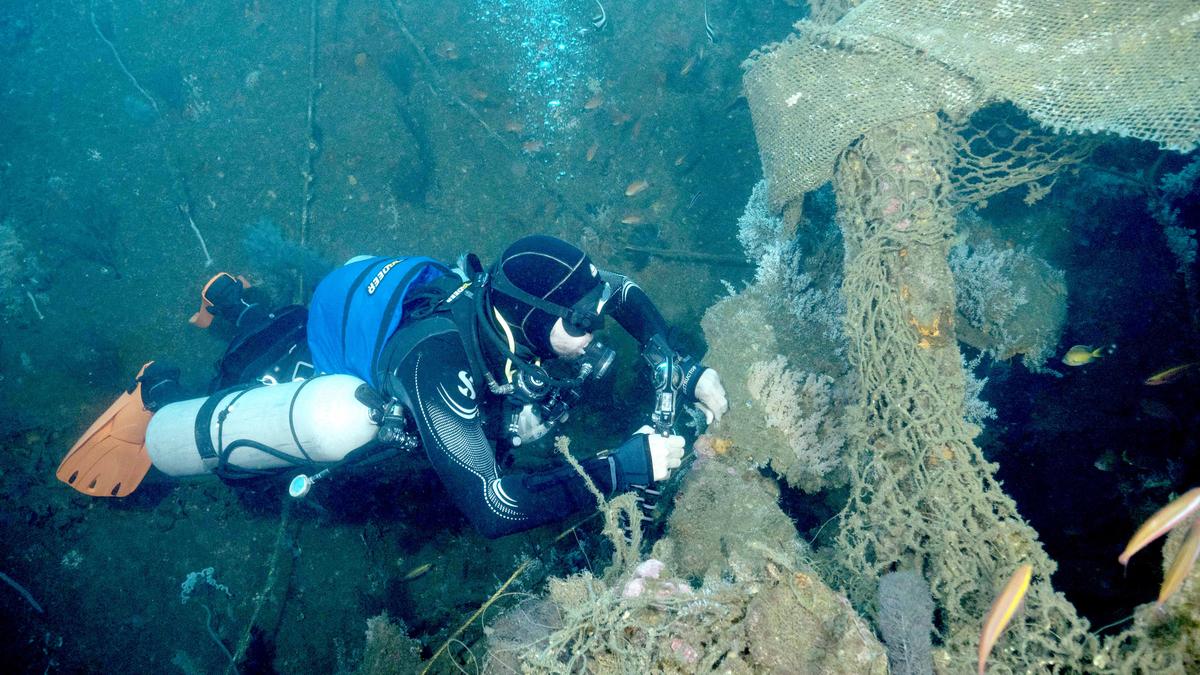
Researchers eye tie-ups for removal of ‘ghost’ nets from shipwrecks, reefs off Thiruvananthapuram coast
The Hindu
The problem of the ‘ghost’ nets was flagged while announcing the results of the biodiversity survey in May this year
After a gruelling, year-long survey found two old shipwrecks off Thiruvananthapuram coast to have transformed into thriving underwater ecosystems, researchers are now trying to find ways to rid them and several rocky reefs in the region of an extreme threat to marine life — ‘ghost’ nets.
The Department of Aquatic Biology and Fisheries, University of Kerala, which surveyed the marine biodiversity on natural reefs and the two shipwrecks under a year-long project, is now eyeing collaborations with local and foreign agencies for the removal of the lost or abandoned fishing nets, which are often referred to as ‘ghost’ fishing gear.
The Marine Monitoring Lab (MML) under the department which performed the survey with the support of Project Ecomarine, co-funded by the European Union’s Erasmus Programme, is in touch with the National Oceanic and Atmospheric Administration (NOAA), a United States government agency that runs a marine debris programme, and also local outfits, to find a workable solution.
“NOAA offers funding for the removal of marine debris and we have issued a letter of commitment for funding. We are also in talks with Kerala-based outfits which employ divers. Removal of the nets will not be easy as the wrecks are at depths of 40 metres or more,” A. Biju Kumar, Head, Department of Aquatic Biology and Fisheries, told The Hindu.
A major concern globally, lost or abandoned fishing nets pose a danger to marine life. These derelict fishing gear continue to trap fish and other sea creatures. Often made from synthetic material such as nylon, the nets can remain a never-ending threat to sea creatures for hundreds of years.
Researchers had flagged the problem of the ‘ghost’ nets while announcing the results of the biodiversity survey in May this year. Reportedly those of a Dutch ship which sank in 1752 off Anchuthengu and a Greek ship that sank in 1968 off Shangumughom, the wrecks were found to harbour 212 species, including several reported for the first time from Kerala. The wrecks sit at depths of about 40 metres and 55 metres respectively, making debris removal a difficult and time-consuming affair.
Human divers and Remotely Operated Vehicles (ROVs) were employed for the survey which covered rocky reefs up to a depth of 100 metres in addition to the derelict ships. The Dutch ship had previously been documented by local fishermen and the Valiyathura-based Friends of Marine Life (FML), but the Greek ship was photo-documented for the first time under the University of Kerala-Ecomarine survey, according to the department.













